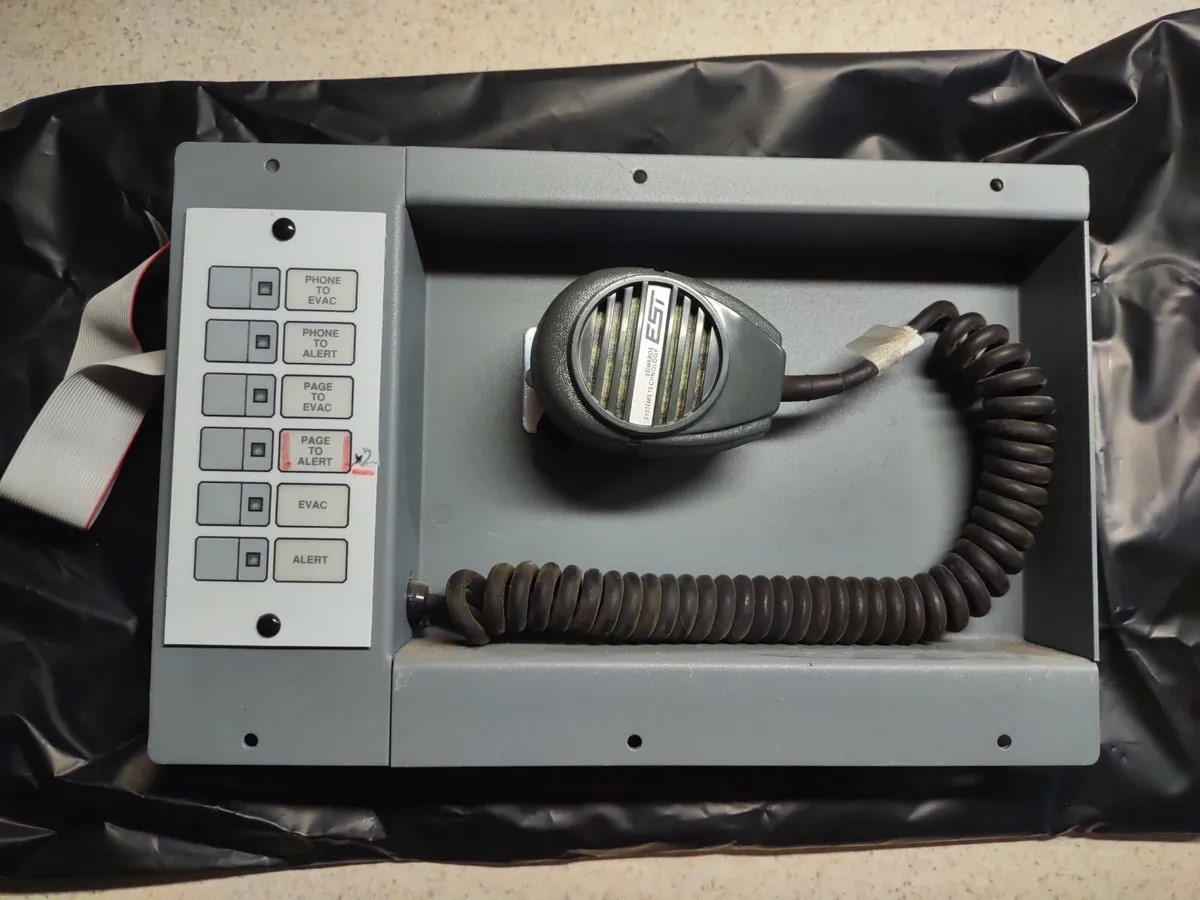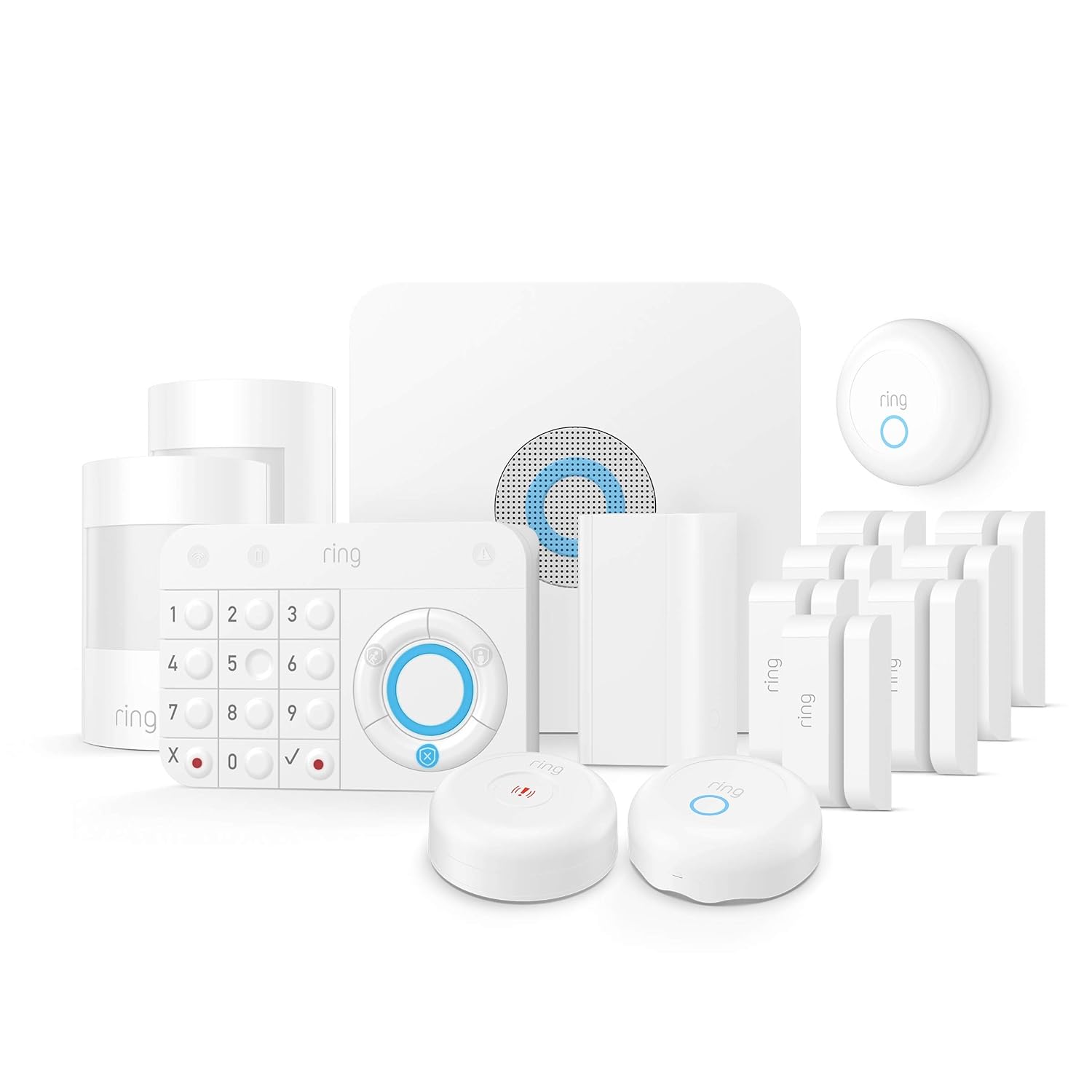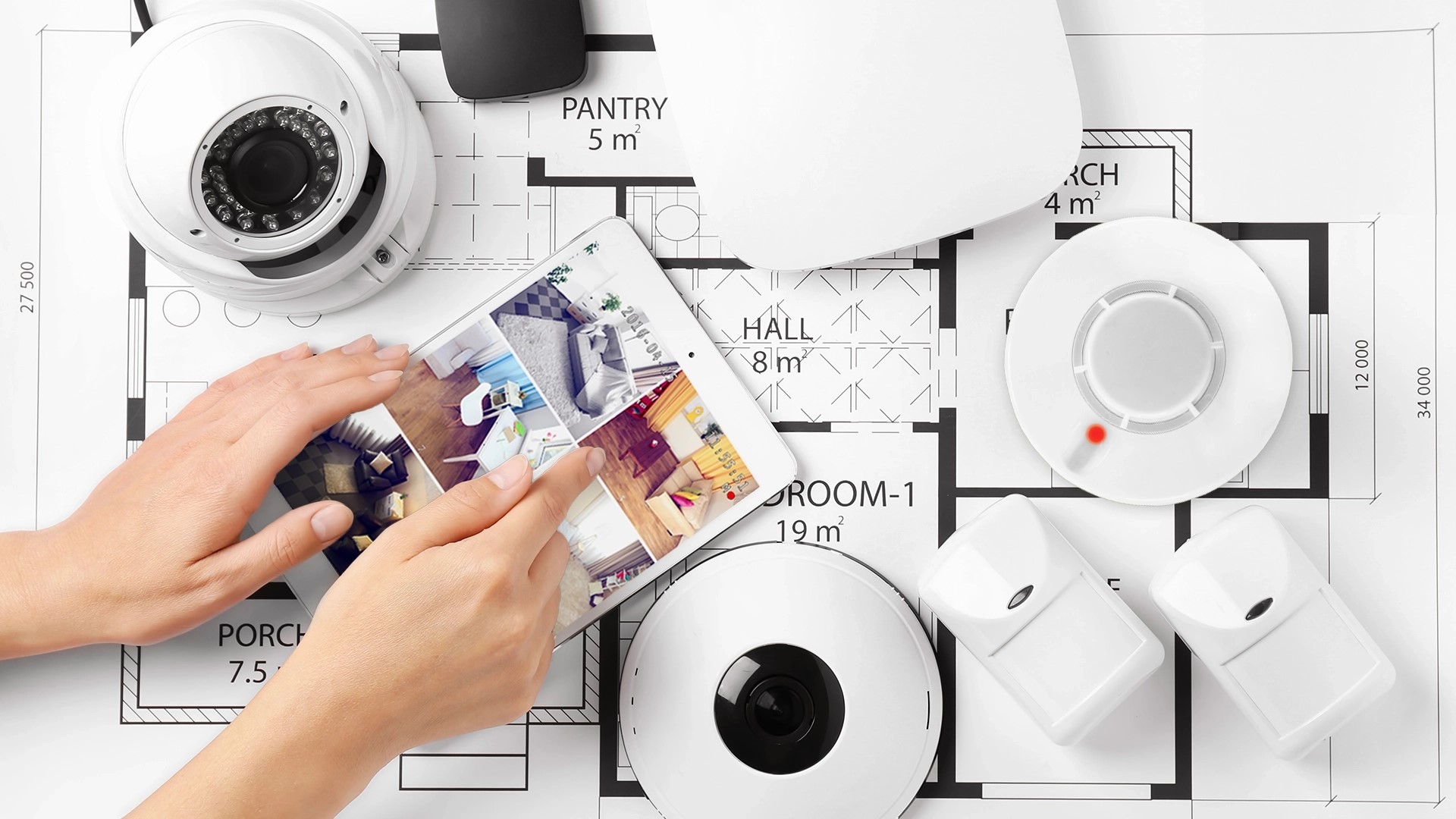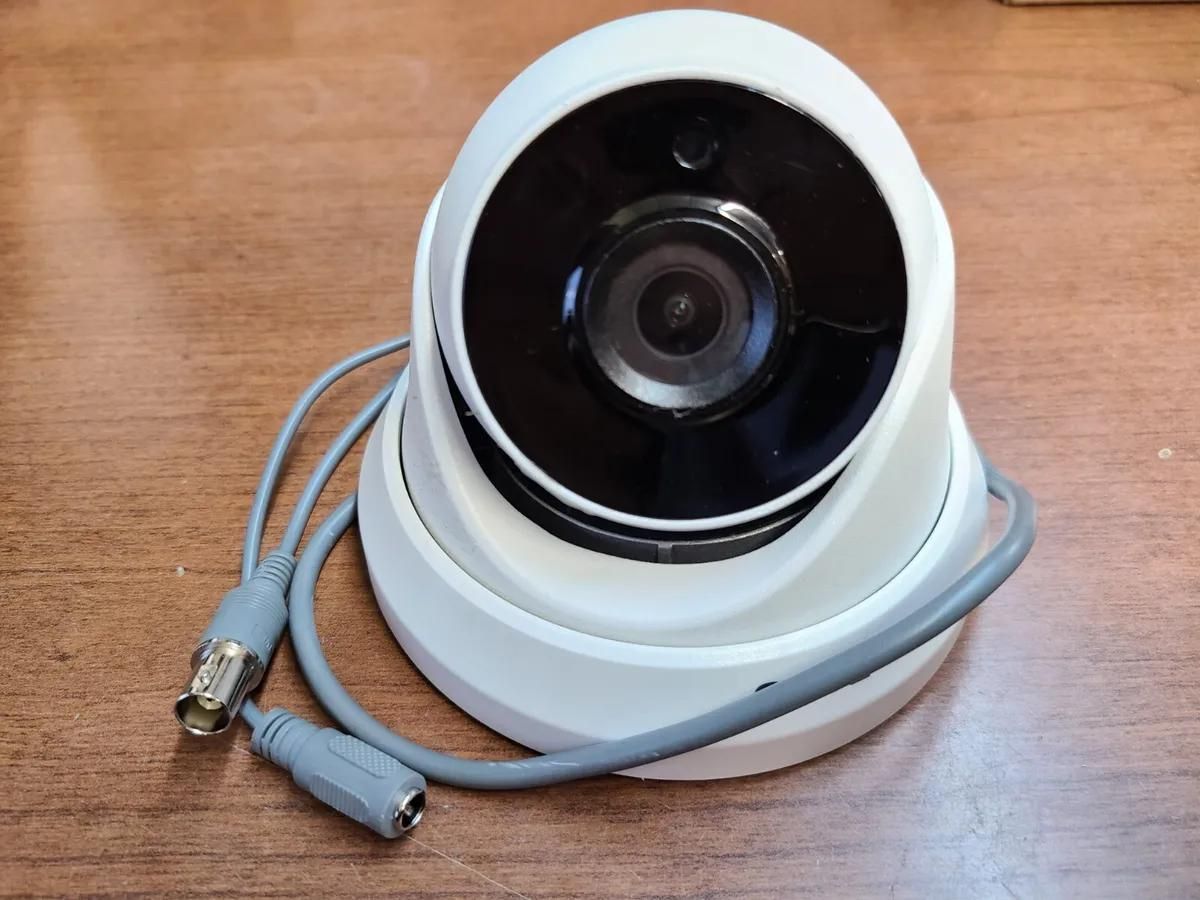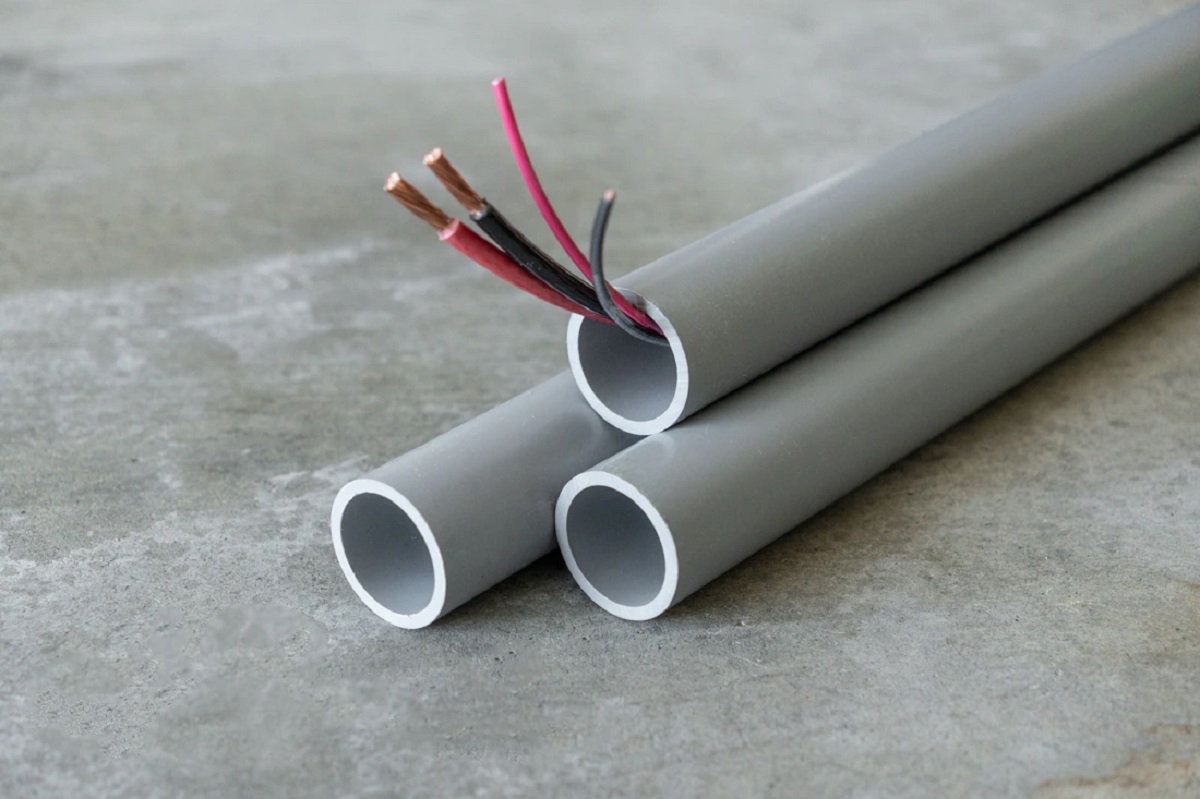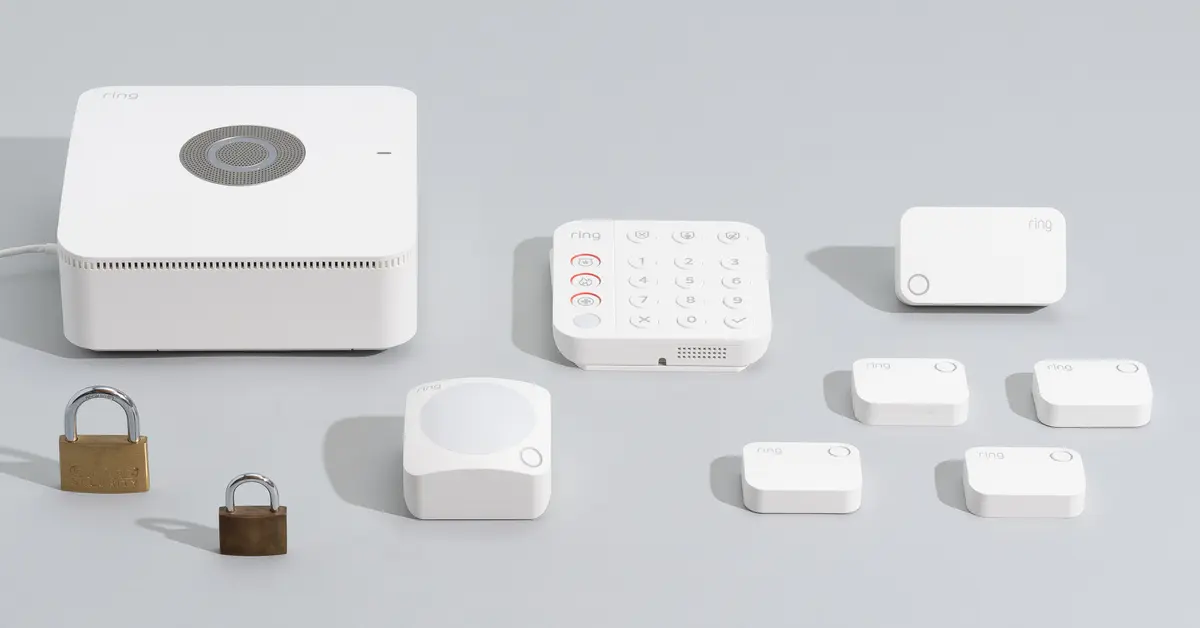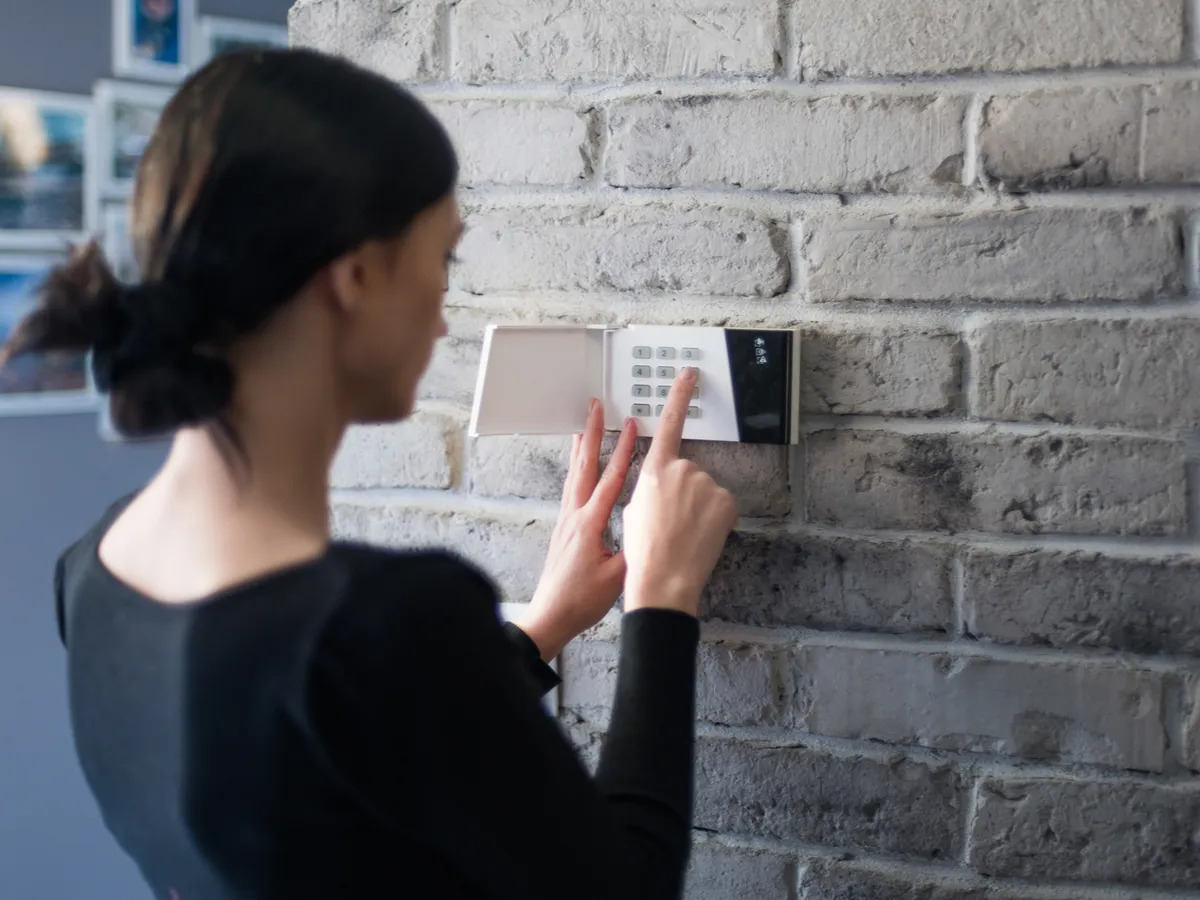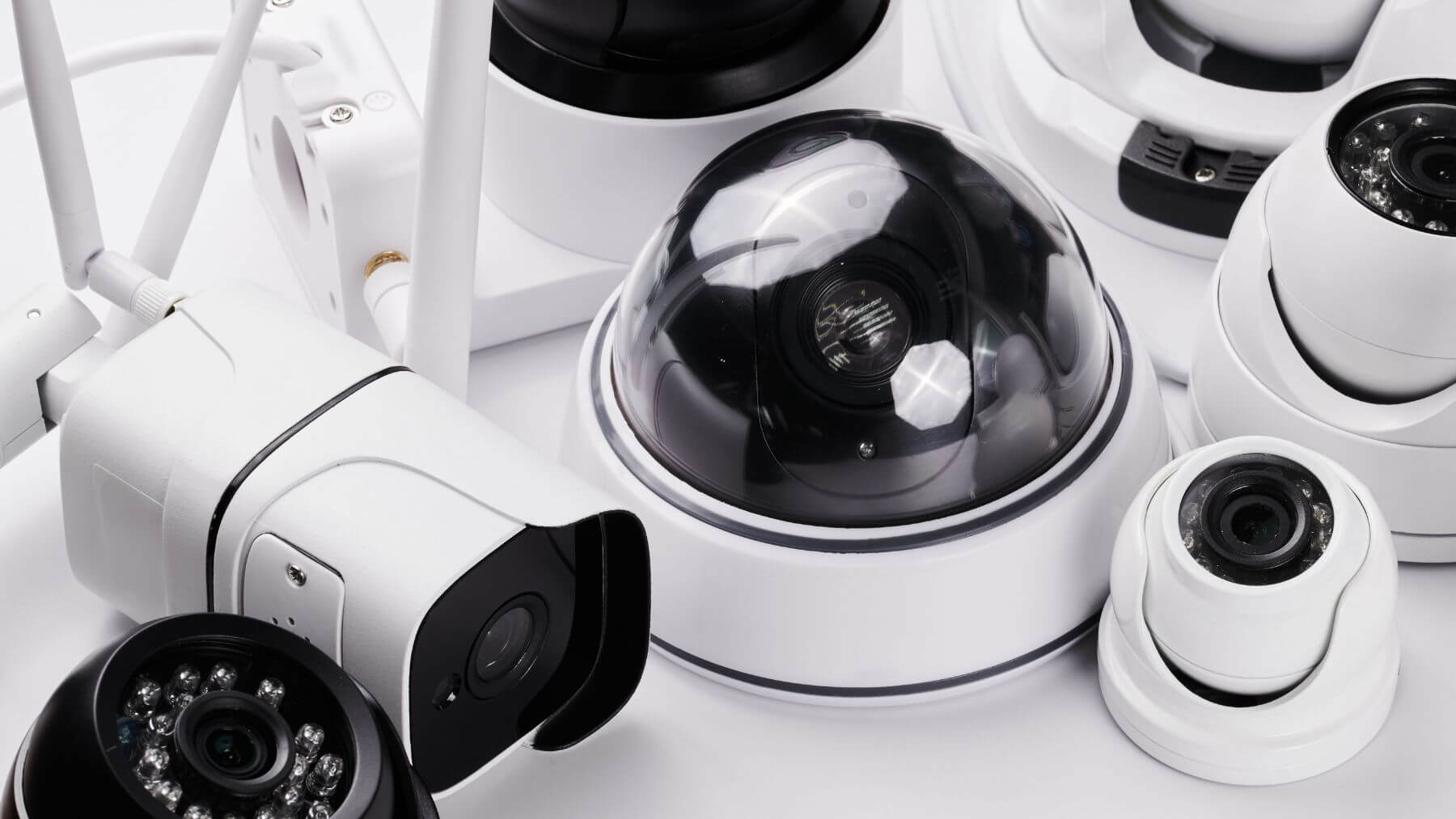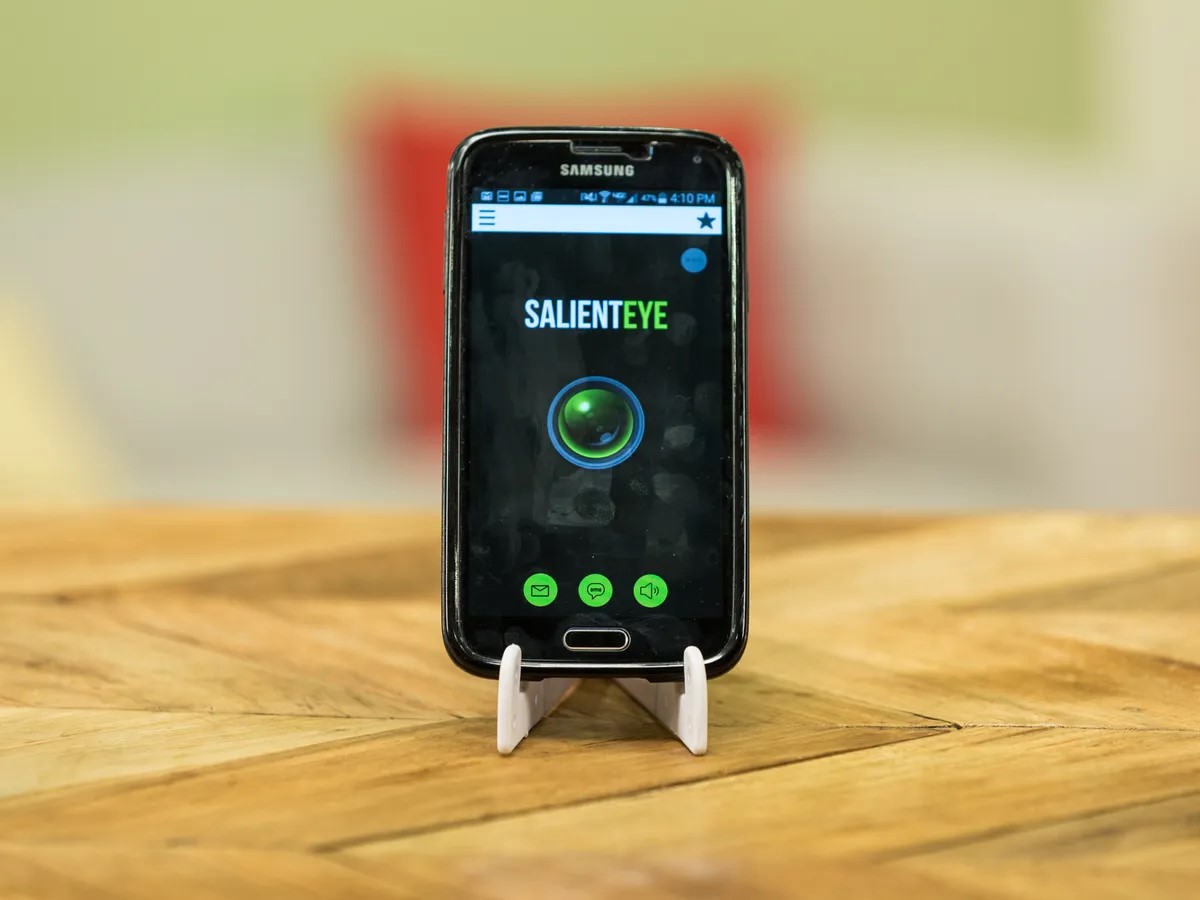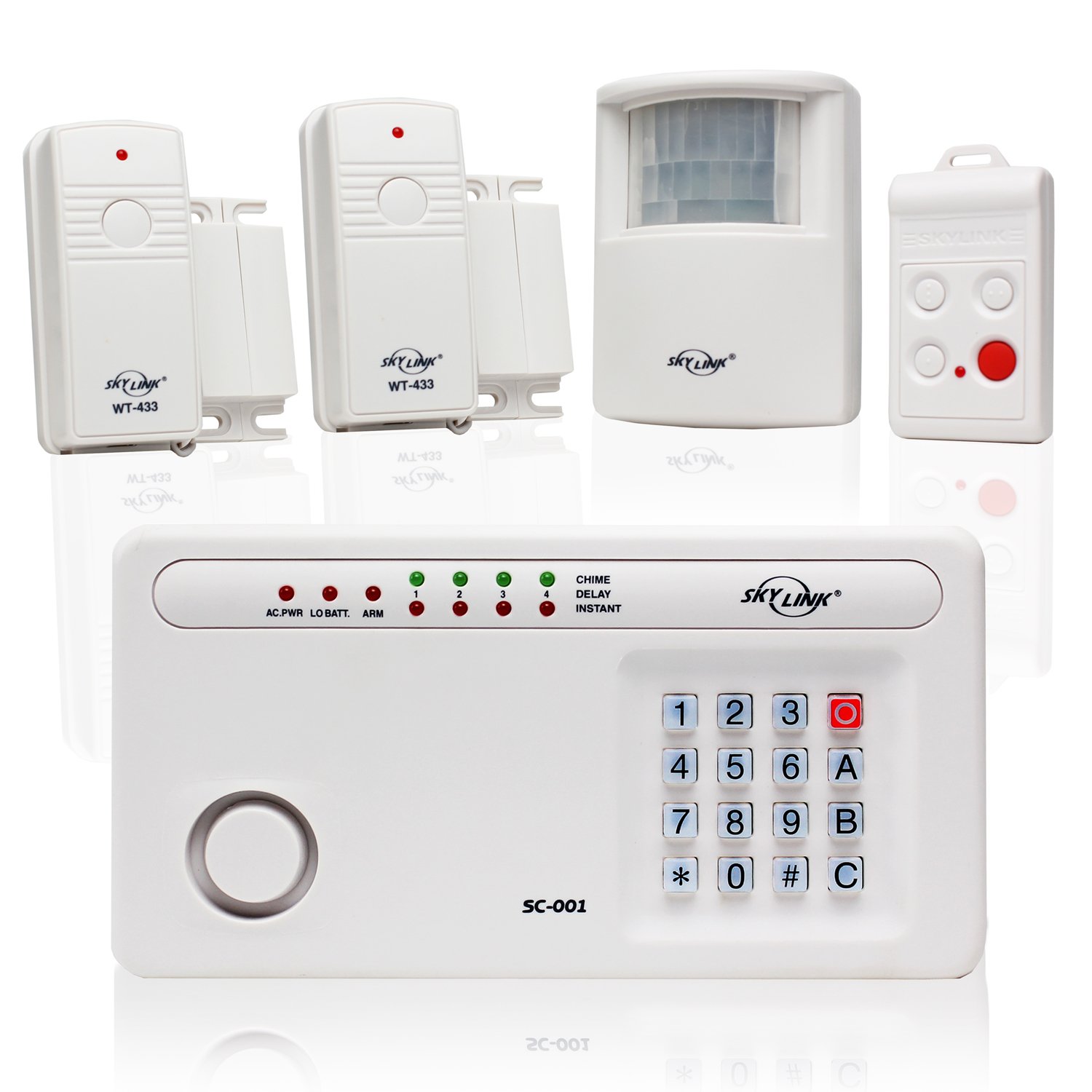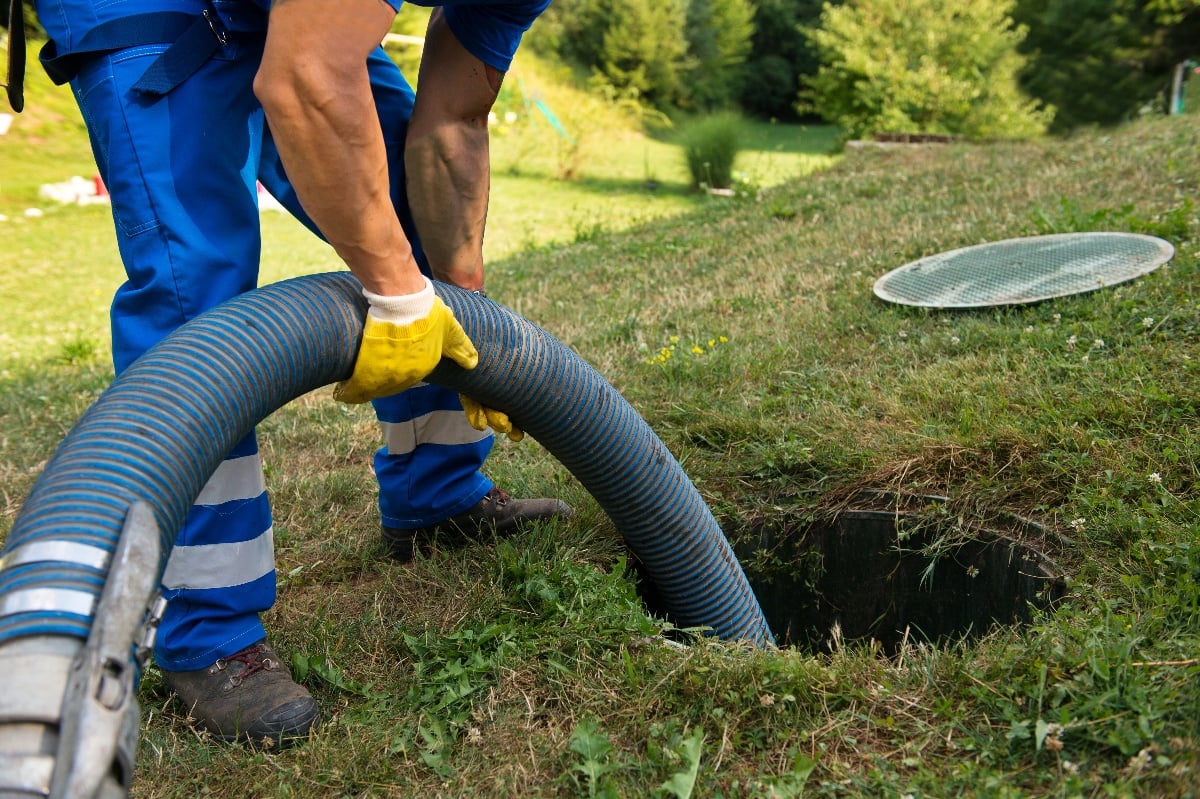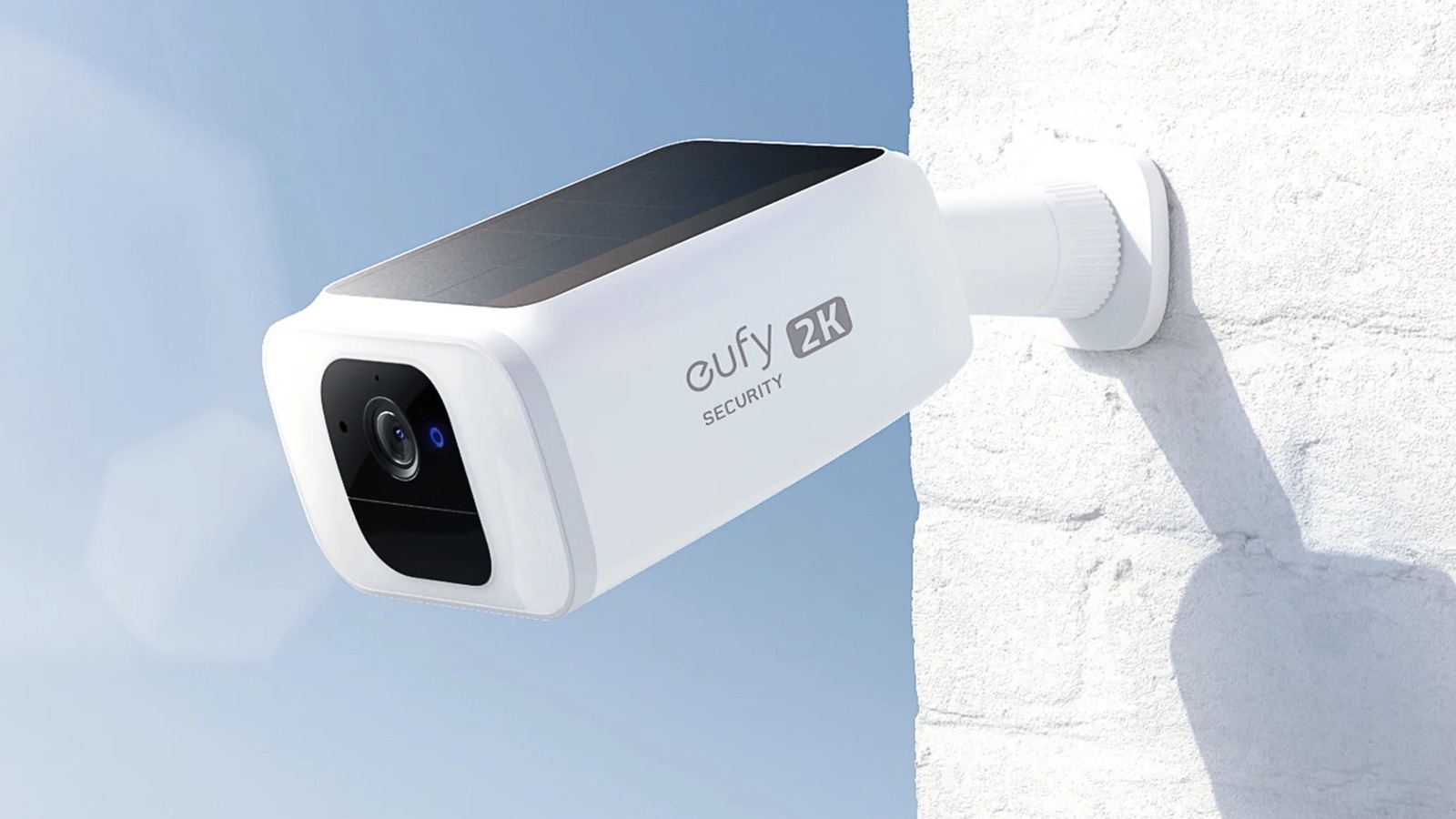Home>Home Security and Surveillance>What Types Of Security Are Alarm Systems
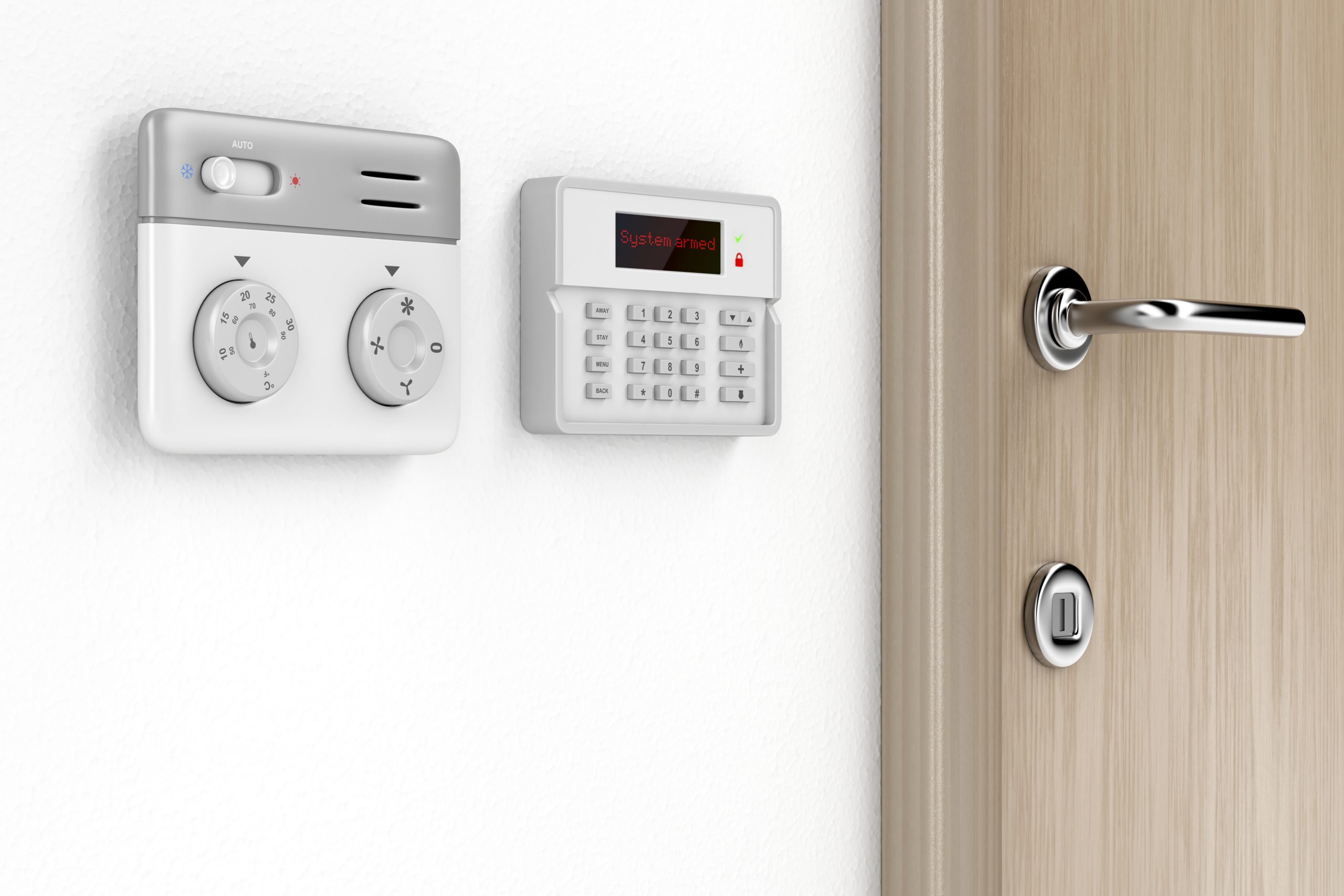

Home Security and Surveillance
What Types Of Security Are Alarm Systems
Modified: March 6, 2024
Discover the different types of security offered by alarm systems. Protect your home with advanced home security and surveillance options for ultimate peace of mind.
(Many of the links in this article redirect to a specific reviewed product. Your purchase of these products through affiliate links helps to generate commission for Storables.com, at no extra cost. Learn more)
Introduction
Welcome to the world of home security and surveillance, where technology meets peace of mind. In an ever-changing and unpredictable world, ensuring the safety and security of your home and loved ones has become a primary concern for many homeowners. Fortunately, advancements in home security systems and surveillance technology have made it easier than ever to protect your property and maintain a sense of security.
When it comes to home security, one of the most effective tools you can invest in is an alarm system. Alarm systems are designed to detect and alert homeowners to potential threats or intrusions, providing an immediate response and helping to prevent crimes. However, not all alarm systems are created equal. There are different types of security features and sensors available, each serving a specific purpose and adding an additional layer of protection to your home.
In this article, we will explore the various types of security features that you can incorporate into your alarm system to create a comprehensive security solution for your home. From motion sensors to video surveillance and access control systems, we will delve into the details of each feature, highlighting their benefits and explaining how they contribute to safeguarding your property.
Whether you are looking to secure your home against burglaries, fires, floods, or other emergencies, understanding the different types of security features available will help you make an informed decision when selecting the right system for your home. So, let’s dive into the world of home security and explore the various types of security features that can help keep your home safe and secure.
Key Takeaways:
- Motion sensors, door/window sensors, and glass break sensors detect intruders, while smoke/fire detectors, carbon monoxide sensors, and flood/water sensors provide early warnings for emergencies, ensuring a safe home environment.
- Panic buttons, video surveillance, access control systems, and alarm monitoring offer swift response and evidence gathering, enhancing security and peace of mind for homeowners and their families.
Read more: What Is Alarm Drip On Security Camera
Motion Sensors
Motion sensors are a crucial component of any home security system. These sensors are designed to detect movement within a designated area and trigger an alarm or alert. They are typically placed in strategic locations throughout the home, such as entryways, hallways, and common areas.
There are two main types of motion sensors: passive infrared (PIR) and microwave. PIR sensors detect changes in infrared radiation, such as body heat, while microwave sensors emit and measure microwave signals to detect motion. Some advanced motion sensors combine both PIR and microwave technologies for enhanced accuracy and reduced false alarms.
The primary function of motion sensors is to detect unauthorized movement within your home. When an intruder enters the monitored area, the sensor will trigger the alarm, alerting you and any monitoring services you have in place. This immediate notification allows for swift action to be taken, whether it’s contacting the authorities or assessing the situation remotely through a security app.
In addition to detecting potential intruders, motion sensors can also be used for other purposes, such as activating lights or triggering video recording. This not only adds an extra layer of security but also provides convenience and energy efficiency.
When installing motion sensors, it’s important to consider their range and sensitivity. The range determines the distance over which the sensor can detect movement, while the sensitivity determines how easily it picks up on slight movements. Finding the right balance will depend on the size and layout of your home.
Overall, motion sensors are a valuable addition to any home security system. By detecting unauthorized movement, they provide an extra level of protection and act as a deterrent for potential intruders. With advancements in technology, motion sensors have become more accurate and reliable than ever, making them an essential component of a comprehensive home security solution.
Door and Window Sensors
When it comes to home security, doors and windows are often the primary points of entry for intruders. Therefore, it’s crucial to have door and window sensors as part of your security system. These sensors are designed to detect any unauthorized opening or tampering of doors and windows.
Door and window sensors typically consist of two parts: a magnetic sensor and a magnet. The sensor is installed on the door or window frame, while the magnet is placed on the corresponding door or window itself. When the door or window is closed, the magnet aligns with the sensor, creating a closed circuit. When the door or window is opened, the circuit is broken, triggering the alarm or alert.
These sensors are highly effective in detecting forced entry attempts. If an intruder attempts to break into your home by forcing open a door or window, the sensor will immediately trigger the alarm, alerting you and any monitoring services. This provides you with valuable time to respond and take appropriate action.
One of the advantages of door and window sensors is their versatility. They can be installed on various types of doors and windows, including sliding doors, French doors, and casement windows. This means that you can protect multiple entry points throughout your home, ensuring comprehensive security coverage.
Another important feature of door and window sensors is their ability to be easily integrated with larger security systems. They often come with wireless connectivity, allowing them to communicate with a central control panel or a security app. This allows you to remotely monitor the status of your doors and windows, receive real-time alerts, and even control and automate other security features like video surveillance and smart locks.
In summary, door and window sensors are essential components of a comprehensive home security system. They provide an additional layer of protection by detecting unauthorized entry attempts and triggering immediate alerts. With their versatility and integration capabilities, these sensors ensure that your doors and windows are effectively monitored and safeguarded, giving you peace of mind knowing that your home is secure.
Glass Break Sensors
Glass break sensors, also known as glass break detectors, are security devices that can detect the sound or vibration caused by the shattering or breaking of glass. These sensors play a vital role in protecting your home against intruders who attempt to gain access by breaking windows or glass doors.
Unlike door and window sensors, which primarily detect the opening or closing of doors and windows, glass break sensors are specifically designed to identify the distinct sound frequency or patterns associated with glass breaking. When the sensor detects these specific acoustic signals, it triggers an alarm or sends an alert to notify you of a potential break-in.
Glass break sensors are installed in areas where there are windows or glass doors, providing comprehensive coverage. They can be set to different sensitivity levels, allowing them to differentiate between the sound of a loud crash and the normal sounds of everyday life. This helps to reduce false alarms while still providing effective security.
One of the advantages of glass break sensors is their ability to cover a larger area compared to individual door or window sensors. A single glass break sensor can protect multiple windows in a room, making them a cost-effective solution for securing areas with multiple glass surfaces.
Some advanced glass break sensors utilize both sound and vibration detection. In addition to analyzing the sound frequency of glass breaking, these sensors can detect vibrations generated by impact on the glass. This added capability ensures a higher level of accuracy, reducing false alarms and providing reliable detection.
In recent years, advancements in technology have led to the development of wireless glass break sensors. These wireless sensors are easy to install and can be seamlessly integrated into an existing home security system without the need for extensive wiring. This makes them a convenient and versatile option for both new installations and retrofits.
Overall, glass break sensors are essential components of a comprehensive home security system. By detecting the distinct sound and vibrations of glass breaking, these sensors provide an extra layer of protection against burglaries and break-ins. Their ability to cover larger areas and various types of glass surfaces ensures that your home is well-secured against intruders attempting to gain access through windows or glass doors.
Smoke and Fire Detectors
Smoke and fire detectors are crucial components of any home security system, as they are designed to detect the presence of smoke or fire and alert occupants to potential dangers. These detectors are essential for early detection and timely response in case of a fire emergency.
Smoke detectors work by constantly monitoring the air for the presence of smoke particles. They typically use one of two technologies: ionization or photoelectric. Ionization smoke detectors contain a small amount of radioactive material that ionizes the air. When smoke particles enter the chamber, they interrupt the ionization, triggering the alarm. Photoelectric smoke detectors use a light source and a sensor to detect smoke particles. When smoke enters the chamber, it scatters the light, causing the sensor to detect the change and activate the alarm.
Fire detectors are designed to detect the presence of fire itself, rather than just smoke. They use various technologies, including heat and flame detection, to identify the presence of a fire. Some fire detectors utilize a combination of different technologies to provide enhanced detection capabilities and reduce false alarms.
Both smoke and fire detectors are typically interconnected, meaning that when one detector detects a fire or smoke, it triggers all the detectors in the home to sound the alarm. This ensures that occupants are alerted to the potential danger, giving them valuable time to evacuate the premises and contact emergency services.
By including smoke and fire detectors in your home security system, you can significantly increase the safety of your household. In the event of a fire, early detection can make a life-saving difference. These detectors provide an instant warning, allowing you and your family to escape before the fire escalates and becomes life-threatening.
In addition to sounding an audible alarm, many modern smoke and fire detectors are also equipped with advanced features such as wireless connectivity and integration with home security systems. This enables remote monitoring and real-time alerts, even when you’re not at home, providing peace of mind and allowing for quick response and intervention.
Regular maintenance and testing are essential to ensure these detectors are functioning optimally. It is recommended to test the detectors regularly, replace batteries as needed, and follow manufacturer’s guidelines for maintenance and lifespan of the detectors.
Investing in reliable smoke and fire detectors is a critical step in safeguarding your home and protecting your loved ones. By detecting the presence of smoke or fire at the earliest stage possible, these detectors provide invaluable safety and peace of mind, ensuring that your home is protected from the devastating effects of fire.
Carbon Monoxide Sensors
Carbon monoxide (CO) is a colorless, odorless, and highly toxic gas that can be produced by common household appliances such as gas furnaces, stoves, water heaters, and fireplaces. Inhalation of carbon monoxide can lead to serious health issues or even death. Therefore, having carbon monoxide sensors in your home is essential for detecting this dangerous gas and protecting your family.
Carbon monoxide sensors, also known as CO detectors, are designed to measure the levels of carbon monoxide in the air. They work by continuously monitoring the air for the presence of this gas and triggering an alarm if the levels exceed a safe threshold.
Like smoke detectors, carbon monoxide sensors are typically equipped with alarms that produce a loud sound to alert occupants of potential danger. This audible alarm gives you a prompt warning to evacuate the premises and seek fresh air immediately.
Carbon monoxide sensors are usually placed in close proximity to areas where carbon monoxide-producing appliances are located, such as living rooms, bedrooms, or near garages. It’s important to follow the manufacturer’s guidelines and installation instructions to ensure optimal placement and coverage throughout your home.
Some advanced CO detectors are equipped with additional features such as digital displays that show real-time carbon monoxide levels, providing you with valuable information to assess the situation and take appropriate action. Some models may also have Bluetooth or Wi-Fi connectivity, allowing you to monitor carbon monoxide levels remotely on your smartphone or through a home security app.
It is crucial to have carbon monoxide detectors professionally tested and maintained on a regular basis. Testing the detectors ensures that they are functioning properly and can accurately detect the presence of carbon monoxide. Additionally, it is important to replace the batteries in the sensors as needed and follow the manufacturer’s recommendations for the lifespan of the detectors.
The incorporation of carbon monoxide sensors into your home security system provides an extra layer of protection for you and your family. By detecting and alerting you to the presence of this dangerous gas, these sensors help ensure the well-being and safety of your household. Investing in reliable and properly maintained carbon monoxide detectors is an essential step to safeguarding your home and reducing the risk of carbon monoxide poisoning.
When choosing an alarm system, consider both perimeter and interior security. Perimeter security includes sensors on doors and windows, while interior security includes motion detectors and glass break sensors. Combining both types provides comprehensive protection for your home or business.
Panic Buttons
In times of emergency or when you feel threatened, having a panic button within reach can provide a sense of security and peace of mind. Panic buttons are devices designed to instantly summon help in emergency situations, allowing you to quickly and discreetly alert authorities or a monitoring service.
Traditionally, panic buttons were physical devices that could be pressed or activated to trigger an alarm. These buttons were often installed in strategic locations throughout the home or carried on a keychain. Today, with the advent of smart home technology, panic buttons can now be integrated into security systems and accessed through mobile apps or wearable devices.
The primary function of a panic button is to signal for immediate assistance during critical situations. Whether you are facing a home invasion, medical emergency, or any other threatening situation, pressing the panic button will initiate an alarm and notify emergency responders or a designated monitoring center.
Panic buttons can be installed in discreet locations, such as under a desk or behind a cabinet, allowing you to activate them without alerting the intruder. This provides an added layer of safety, especially during home invasions or instances where you are unable to speak or use your phone.
Many panic buttons are designed to work in tandem with other security devices. For example, when a panic button is activated, it can trigger sirens, flashlights, or even activate video surveillance cameras to capture evidence. These features not only alert authorities but also help gather critical information about the situation.
With advancements in technology, panic buttons are now available in various forms, including wireless buttons, smartphone apps, and even wearable devices like smartwatches or pendants. This flexibility allows you to have easy access to a panic button wherever you are in your home or on the go.
Panic buttons are not limited to home security systems; they are also commonly found in commercial buildings, schools, healthcare facilities, and hotels. The presence of panic buttons in these environments ensures a quick and coordinated response in emergencies, improving the overall safety of the premises.
Having a panic button as part of your home security system gives you confidence and peace of mind, knowing that help is just a press away. Whether you prefer a physical button or a digital option, incorporating a panic button into your security setup adds an additional layer of protection and empowers you to respond swiftly in times of crisis.
Flood and Water Sensors
Water damage can be a costly and devastating occurrence in any home. Whether it’s due to a burst pipe, a leaky appliance, or severe weather conditions, detecting water and flooding issues early is crucial. That’s where flood and water sensors come into play.
Flood and water sensors are designed to detect the presence of water or an abnormal increase in moisture levels. These sensors are typically placed in areas prone to water damage, such as basements, laundry rooms, bathrooms, and near water heaters or sump pumps.
When a flood or water is detected, the sensors send an alert to your home security system, triggering an alarm or notification. This immediate alert allows you to take necessary actions to mitigate the damage, such as shutting off the main water supply or contacting a plumber.
Water sensors come in different forms, including wired or wireless sensors. Wired sensors require professional installation and are connected to your security system via wiring. On the other hand, wireless sensors are battery-powered and communicate with your security system using wireless technology, allowing for easy placement and installation flexibility.
In addition to detecting water, some advanced flood and water sensors can also monitor temperature and humidity levels. This added functionality helps identify potential water damage or mold growth caused by excessive moisture or inadequate ventilation.
Flood and water sensors are particularly valuable when you are away from home or during periods of extended absence. If water is detected while you’re away, the sensors can alert you remotely through your security system app, giving you the opportunity to address the issue before it escalates into a significant problem.
Integrating flood and water sensors into your home security system provides you with an extra layer of protection against water damage. By detecting water leaks or flooding early, these sensors help minimize the potential risk, save you from costly repairs, and protect your valuable possessions.
Regular maintenance and testing of water sensors are essential to ensure their proper functioning. It’s important to inspect the sensors periodically, clean them if needed, and replace the batteries as recommended by the manufacturer.
Investing in flood and water sensors not only helps protect your home from water damage but also provides you with peace of mind, knowing that any potential water-related issues will be detected promptly. With their ability to notify you and the security system in real-time, these sensors contribute to maintaining a dry and safe living environment for you and your family.
Video Surveillance
Video surveillance is a powerful tool in home security, providing homeowners with real-time monitoring and evidence gathering capabilities. With advancements in technology, video surveillance systems have become more accessible, affordable, and user-friendly, making them a popular choice for homeowners seeking to enhance their security measures.
Video surveillance systems typically consist of security cameras strategically placed around the perimeter and interior of the home. These cameras capture high-resolution video footage, which can be viewed live or recorded for later review.
The presence of visible cameras acts as a deterrent to potential intruders, as they are aware that their actions are being recorded. In the event of a break-in or suspicious activity, the recorded footage can provide valuable evidence for law enforcement investigations.
One of the significant advantages of video surveillance is its ability to allow homeowners to monitor their property in real-time. Modern cameras are often equipped with Wi-Fi connectivity, allowing you to access live video feeds on your smartphone, tablet, or computer from anywhere in the world.
Additionally, many video surveillance systems offer motion detection capabilities. These cameras can be set to only start recording when they detect movement, saving storage space and making it easier to review relevant footage. Motion detection can also trigger alerts or notifications, informing you whenever activity is detected in a specified area.
Some advanced video surveillance systems offer features such as night vision, zoom capabilities, and pan/tilt/zoom (PTZ) functionality. Night vision allows cameras to capture clear footage even in low light conditions, while zoom capabilities and PTZ functionality enable you to focus on specific areas or objects of interest.
It’s important to note that video surveillance systems must be installed responsibly and in accordance with local laws and regulations. Respecting privacy boundaries, focusing cameras on your property, and avoiding surveillance of areas where individuals have a reasonable expectation of privacy are crucial considerations.
Regular maintenance and monitoring of video surveillance systems are essential to ensure their optimal performance. This includes checking camera angles, cleaning lenses, updating firmware, and reviewing storage capacity to ensure uninterrupted recording.
Video surveillance serves as a valuable tool in home security, adding an extra layer of protection to your property. With its deterrence factor, real-time monitoring capabilities, and evidentiary value, a well-designed video surveillance system can provide you with peace of mind and help maintain a secure and safe living environment.
Read more: What Is My Wireless Security Type
Access Control Systems
Access control systems are an essential component of home security, allowing homeowners to regulate entry and restrict unauthorized access to their property. These systems provide an extra layer of protection by ensuring that only authorized individuals can enter specific areas of the house or property.
There are several types of access control systems available, ranging from basic key-based systems to advanced biometric and smart lock solutions. Each system has its own unique features and benefits, catering to different security needs and preferences.
Key-based access control systems are the most basic form of access control. They utilize physical keys or keycards to grant entry to authorized individuals. While simple and cost-effective, these systems offer limited control and may pose a security risk if keys are lost or duplicated.
Keypad or PIN-based access control systems require users to enter a unique code to gain entry. These systems offer greater control and flexibility, as codes can be easily changed or personalized for individual users. However, they still rely on users remembering and safeguarding their codes.
Biometric access control systems have gained popularity in recent years due to their heightened security and convenience. These systems use unique physiological or behavioral characteristics such as fingerprints, facial recognition, or iris scans to verify the identity of individuals. Biometric systems offer a high level of accuracy and eliminate the need for physical keys or codes.
Smart lock access control systems take advantage of modern technology and connectivity. These systems integrate with smartphones, allowing homeowners to remotely control and monitor access to their property. Smart locks can be unlocked using a mobile app, temporary digital keys, or even voice commands, enhancing convenience and security.
Access control systems provide benefits beyond just securing entry points. They allow homeowners to track and record access history, enabling them to monitor who enters and leaves their property. This information can be valuable in investigations or when identifying potential security breaches.
Moreover, access control systems can be integrated with other security features such as video surveillance or alarm systems, creating a comprehensive security solution. When an access control system is triggered, it can trigger other security measures, such as recording video footage or sounding an alarm.
Regular maintenance and testing are crucial for ensuring the optimal performance of access control systems. This includes updating user credentials, conducting periodic audits, and promptly addressing any issues or malfunctions.
By implementing an appropriate access control system, homeowners can have peace of mind knowing that their property is protected from unauthorized access. Whether it’s a basic keypad system or a sophisticated biometric system, access control enhances security, provides control over who enters your property, and contributes to maintaining a safe living environment.
Alarm Monitoring
Alarm monitoring is a crucial service that enhances the effectiveness of your home security system. With alarm monitoring, your security system is connected to a professional monitoring center that oversees and responds to any alarms or alerts triggered by your system. This 24/7 monitoring ensures that any potential security threats are promptly addressed, even when you are unable to respond yourself.
When your security system detects an intrusion, fire, or other emergency, it sends a signal to the monitoring center. Trained monitoring professionals then assess the situation and take appropriate action, which may include notifying the authorities, contacting you or your designated emergency contacts, or dispatching a security team to your location.
Alarm monitoring provides several key benefits that significantly enhance your home security:
- Rapid response: When an alarm is triggered, monitoring professionals can immediately assess the situation and initiate the appropriate response. This ensures that emergency services are quickly dispatched, reducing the potential damage or danger.
- 24/7 protection: With alarm monitoring, your home is continuously monitored, day and night. This constant vigilance means that your security system is always actively protecting your home, even when you are away or asleep.
- Enhanced peace of mind: Knowing that trained professionals are monitoring your security system adds an extra layer of reassurance. You can have confidence that any potential threats will be promptly detected and addressed, allowing you to focus on other aspects of your life.
- Reduced false alarms: Monitoring professionals are trained to distinguish between actual threats and false alarms. This helps minimize false alarms and prevent unnecessary dispatches of emergency services.
- Integration with other systems: Alarm monitoring can be seamlessly integrated with other components of your home security system, such as video surveillance or access control. This ensures that all elements work together harmoniously to maximize security.
When considering alarm monitoring, it is vital to choose a reputable and trusted monitoring provider. Look for a company with a proven track record in the industry, reliable communication channels, and a fast response time.
Regular testing and maintenance of your security system are essential to ensure the proper functioning of alarm monitoring services. This includes testing sensors, ensuring proper connectivity, and addressing any issues or malfunctions promptly.
By investing in alarm monitoring, you can elevate your home security to a new level. With professional monitoring, you can have peace of mind knowing that your home is being watched over around the clock, providing you with an added layer of protection and maintaining the safety of your loved ones and property.
Conclusion
When it comes to home security and surveillance, there is no one-size-fits-all solution. The key is to build a comprehensive security system that meets your specific needs and provides the highest level of protection for your home and loved ones.
By incorporating various security features such as motion sensors, door and window sensors, glass break sensors, smoke and fire detectors, carbon monoxide sensors, panic buttons, flood and water sensors, video surveillance, access control systems, and alarm monitoring, you can create a robust and effective security solution.
Each of these security features plays a crucial role in safeguarding your home and maintaining a sense of security. Motion sensors detect unauthorized movement, while door and window sensors prevent forced entry attempts. Glass break sensors alert you to potential intruders attempting to break windows or glass doors.
Smoke and fire detectors and carbon monoxide sensors monitor for potential threats and provide life-saving early warning in case of emergencies. Panic buttons offer a quick and discreet way to summon help in critical situations.
Flood and water sensors detect water leaks or flooding, helping you mitigate potential damage. Video surveillance provides real-time monitoring and invaluable evidence, while access control systems regulate entry and restrict unauthorized access to your property. Alarm monitoring ensures that any security breaches are promptly addressed, even when you are not available to respond.
By carefully selecting and integrating these security features into your home security system, you can create a comprehensive and effective defense against potential threats. Regular maintenance, testing, and updates are essential to ensure the optimal performance of your system and maintain a high level of security.
Remember, home security is not just about the technology—it’s also about cultivating a safe and secure environment for you and your family. Stay vigilant, practice good security habits, and communicate openly about security protocols and procedures with your household members.
As technology continues to advance, the field of home security and surveillance evolves as well. Stay informed about the latest innovations and trends in order to make informed decisions and keep your home and loved ones safe.
Investing in a comprehensive home security and surveillance system is an investment in peace of mind. By incorporating these security features, you can rest assured knowing that you have taken proactive steps to protect your home, deter potential intruders, and respond swiftly to emergencies.
Remember, when it comes to your home and the safety of your loved ones, there is no compromise. Prioritize your security, stay vigilant, and create a secure living environment that brings you peace and comfort.
Frequently Asked Questions about What Types Of Security Are Alarm Systems
Was this page helpful?
At Storables.com, we guarantee accurate and reliable information. Our content, validated by Expert Board Contributors, is crafted following stringent Editorial Policies. We're committed to providing you with well-researched, expert-backed insights for all your informational needs.
